The primary goal of the 50Percent project is to produce the first multi-junction solar cell with an efficiency value of 50% and a concentrator module with 40% efficiency. The project also seeks to develop measuring technology so that the cells can be measured in accordance with internationally recognized calibration standards. The project aims to impressively demonstrate German PV research excellence. | Duration: 03/2020 - 05/2024
more infoResearch Projects
-
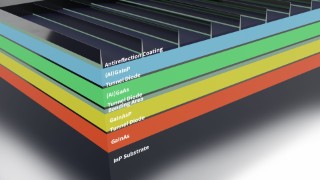
Quantum efficiency measurement of a wafer-bonded 4-junction solar cell.
-
AGEE-Stat
AGEE-Stat - Scientific Analyses of Specific Statistical Aspects of Renewable Energy to Support the Working Group on Renewable Energy Statistics
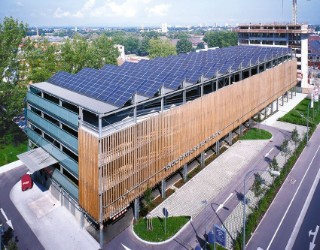
Sample project for roof-top PV systems in commerce, trade and services (parking garage in Freiburg, Germany).
The Working Group on Renewable Energy Statistics (AGEE-Stat) has been commissioned by the Federal Ministry for the Environment, Nature Conservation and Nuclear Safety (BMU) to investigate and provide key data on renewable energy which is needed on a national and international level. It is led by the central office at the Federal Environment Agency (UBA), which also provides scientific and organizational support. Fraunhofer ISE is responsible for offering scientific support in the areas of photovoltaics and heat pumps (environmental heat/ shallow geothermal energy) within the project. | Duration: 04/2019 - 06/2022
more info -
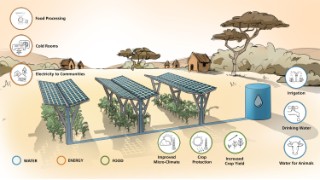
Schematic diagram of a triple land use through agrivoltaics.
The agrivoltaic project in Mali and the Gambia (APV-MaGa) is a research and development project that aims at proofing the technical and economic viability of an integrated triple land-use system in order to contribute to a more ecological and socio-economic sustainable development of the partner countries and in general, the West African economy. Thus, the double land use of agrivoltaics is extended by the range of water management. Furthermore, APV-MaGa aims at uniting agricultural research, socio-economic strategies and solar energy expertise to reveal challenges and opportunities of APV systems and to gain a deeper understanding of synergies and interactions between the Food-Water-Energy-Nexus. | Duration: 08/2020 - 12/2023
more info -
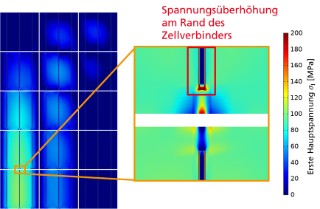
Thermomechanical stresses due to cell interconnection.
State-of-the-art methods are used to achieve maximum module performance from a given cell performance under laboratory conditions (Standard Testing Conditions STC). This optimization is an essential part of the product development for module manufacturers and suppliers in accordance with today's common evaluation of PV modules based on a specific price €/Wp. However, this consideration does not go far enough. The research project "CTS1000+" takes the next decisive step from a module optimized under laboratory conditions to a module with an increased energy yield (kWh) per installed power (kWp): It extends the Cell-To-Module (CTM) consideration in the direction of the overall system (Cell-To-System (CTS)). In a second step, the financial side is added: Improvements are also evaluated in terms of costs. The goal of the sub-project and the overall project is to reduce the electricity production costs (€/kWh) and to increase the achieved yields (kWh/kWp) through optimized modules and components. Necessary steps for this are an understanding of the mechanisms at work, the development of simulation and analysis tools, component optimization, adaptation of the PV module, and the development and application of advanced characterization methods. | Duration: 12/2019 - 11/2022
more info -
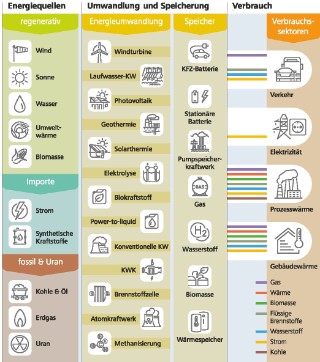
Energy system model REMod of Fraunhofer ISE.
Twenty six research institutions join forces in the Ariadne project to find ways to structure the development of the energy transition. Ariadne is one of four Copernicus projects funded by the German Federal Ministry of Education and Research (BMBF). During the project’s three-year duration, the researchers will investigate which policy instruments are suitable for achieving the climate goals of the Paris Climate Change Agreement. To better understand the effects of singular political measures and policy paths as well as to gain a perspective on the overall system, the project partners together with actors from politics, the energy transition and society will investigate meaningful strategies for the energy system transition and their public acceptance. The project continuously compiles its findings and results on a multimedia website. | Duration: 06/2020 - 05/2023
more info -
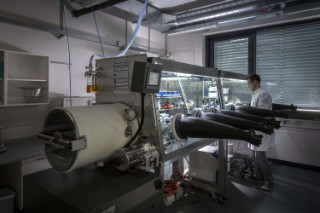
Working at a glovebox on all-solid-state battery cells.
In all-solid-state batteries the liquid electrolyte is replaced by a solid non-combustible ion conductor. This prevents thermal runaway and significantly increases the safety of battery cells. It also facilitates the use of lithium metal anodes, which makes higher energy densities and thus significantly higher ranges for electric vehicles possible. | Duration: 10/2019 - 09/2022
more info -
From Chile Saltpetre to Solar Salt
Design and Evaluation of the Continuous Operation of a Production Process of Pure Sodium Nitrate from Brines of an Upstream Leaching Process
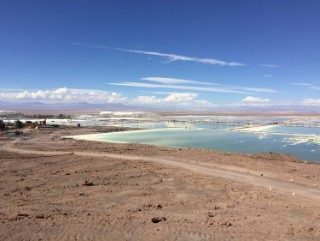
Evaporation ponds in northern Chile.
The Chilean mining company SQM extracts sodium nitrate from the mineral "caliche" in the Atacama Desert. As a high-temperature molten salt, the sodium nitrate is used as a heat transfer and storage medium for solar thermal power plants and in large heat storage facilities. SQM aims to make their processes more resource efficient and has developed a new process in the laboratory. We were able to support this development by implementing an intermediate step between the laboratory and an industrial-scale implementation. This was done within a few months and took the form of a pilot plant. In this way we were able to demonstrate both the technical feasibility of the process chain and its continuous operation. Contact initiation and monitoring of the project was carried out by Fraunhofer Chile Research. | Duration: 03/2020 - 07/2020
more info -
HEAVEN – LowEx Concepts for the Heat Supply of Existing Multi-Family Buildings (LowEx Stock)
Modulating Brine Heat Pump with Multiple-Source System and Decentralized Ventilation Equipment
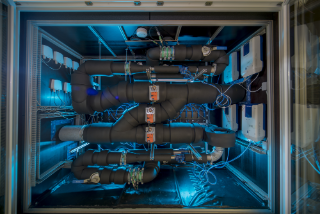
Commissioned test stand for the evaluation of decentralized domestic ventilation units according to the purge air method.
In the HEAVEN sub-project of the LowEx-Bestand project network, heat sources for heat pumps in multi-family houses in urban environments with few usable surrounding areas were addressed. The combined use of outdoor air and ground heat sources was developed and investigated. Decentralized domestic ventilation systems, which can play a key role in the refurbishment of apartment buildings, were also investigated. Demand-controlled regulation in particular promises considerable energy saving potential. The control of these devices was therefore optimized and an evaluation method developed. The demands on the appliances in terms of their compactness, heat recovery and noise levels are constantly increasing, and the technical properties of a coaxial heat exchanger address these. | Duration: 01/2018 - 12/2023
more info -
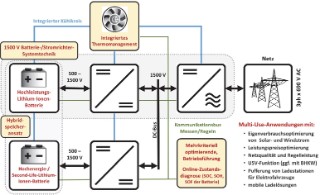
Hybrid lithium-ion battery-based storage solution.
Project in the Business Area: Power Electronics, Grids and Smart Systems, Topic: Power Converter Systems, Duration: 1/2020 - 11/2022
more info -
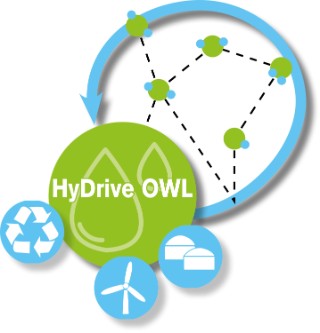
Logo of the HyDrive-OWL project.
Project in the Business Area: Hydrogen Technologies and Electrical Energy Storage, Topic: Electrolysis and Power-to-Gas, Energy System Analysis, Duration: 11/20 - 06/21
more info